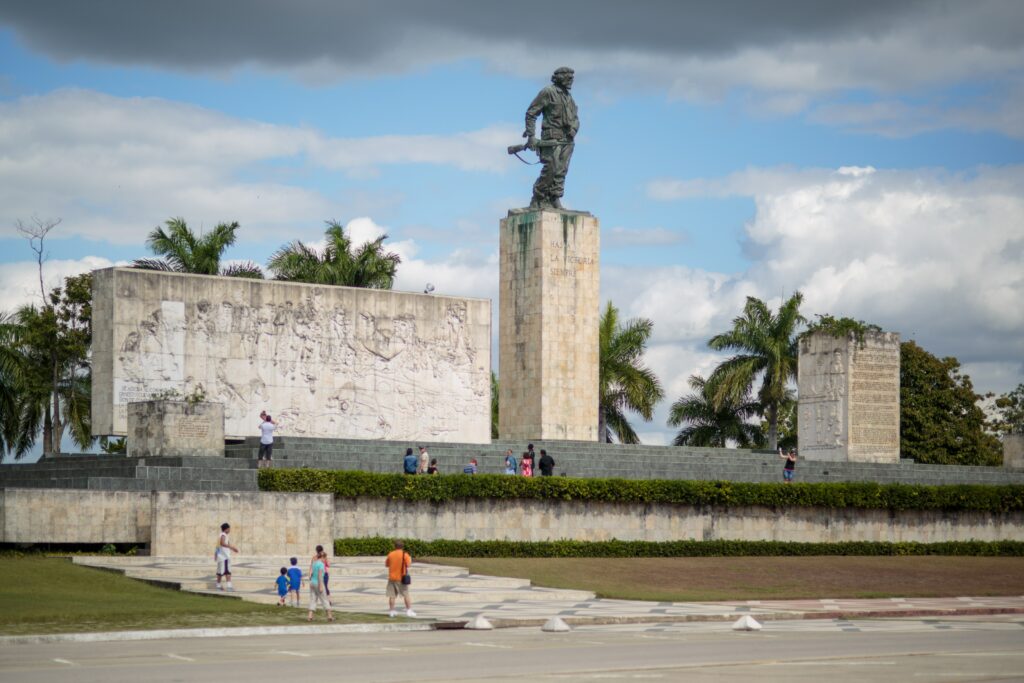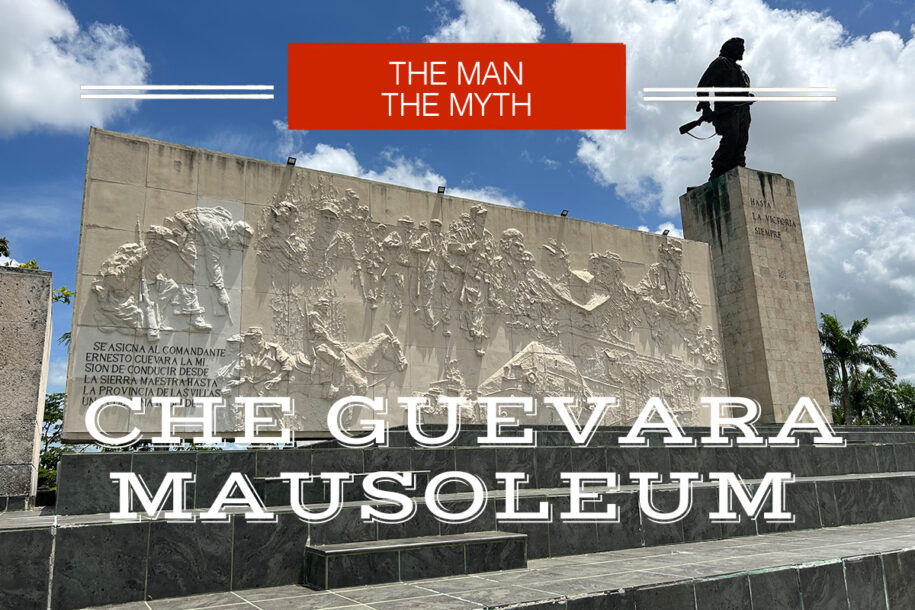
The Che Guevara mausoleum is where you’ll find this Cuban cultural icon these days. And his death half a century ago has only allowed the myth around this man to grow even more
Love him or hate him, Che Guevara is profoundly important to Cubans and Cuban history. The stunning Che Guevara Mausoleum is a testament to this.
Remarkably, Guevara was not Cuban. Perhaps this made him even more significant, willing to fight and die for his beliefs in a country that was not his own (though he met his fate outside Cuba).
Why is Che Guevara such a legend to the Cuban people? Why is a visit to his mausoleum in Cuba an unforgettable experience?
The Young Che Guevara
Che Guevara’s story begins in 1928, in the city of Rosario, Argentina, some 6,484 km (4029 miles) away from from where the Che Guevara Mausoleum is now located, in Santa Clara, Cuba. The young Che was a voracious reader, and a respected athlete, and demonstrated left wing tendencies from an early age. In 1948, at the age of 20 he began to study medicine in Buenos Aires, although his studies were interrupted by several formative journeys throughout Latin America, in which his view of the world was formed (further intensifying his leftist principles).
He graduated in 1953 and went to Guatemala the following year, where he would get his first taste of the revolutionary spirit that would dominate the rest of his life. He joined an armed militia whose purpose was to fight for the leftist government of the country when a coup was attempted (which was ultimately successful). Guevara then went to Mexico where he practised medicine and became acquainted with Fidel Castro.
Che Guevara in Cuba
When he made his way to Cuba in 1956 in order to fight in the Cuban Revolution, there was no way that Che would know that this would be the country he would forever become associated with; a country that would one day be the home of the Che Guevara Mausoleum and his final resting place. From their hiding place in the Sierra Maestra Mountains, Guevara and his fellow revolutionaries became even more angry and disillusioned with the poverty and inequality of Cuba under the regime of President Batista.
His leadership qualities were noticed by Fidel Castro who gave Guevara command of his own battalion. Guevara quickly developed a reputation as a cunning, though often harsh commander; praising those who were loyal, and punishing those who were not. His legacy was concreted at the Battle of Santa Clara (the future spot of the Che Guevara Mausoleum) in which his forces quickly and expertly took control of the city of Santa Clara, leading President Bautista to recognise that the end of his regime was at hand. He fled the country some 12 hours later.
After the Revolution
Che worked alongside the newly established Castro government and arguably helped to shape the future of Cuba. At one point he was the Minister of Industries and the Finance Minister for Cuba. He was also sent on international assignments on behalf of Castro, essentially becoming a statesman for Cuba. This continued until the mid 1960s, at which point Guevara disappeared from the public eye, giving up his official duties. He spent some time in the Congo to aid with revolutionary activities there, and eventually made his way to Bolivia, where he planned to form a guerilla army that could spark a revolution against the government, as he had successfully been a part of in Cuba.
There was some fighting against government troops, and with his reputation from the Cuban Revolution (along with the fact that his activities earned him the displeasure of many foreign governments), it meant that the capture of Che would be quite a prize. He was captured on October 7, 1967, and was executed two days later.
The Che Guevara Mausoleum
In 1995 a confession from someone who knew the location led to the search for Che’s remains (which were buried in an unmarked grave beside a military airstrip). This was of course not an appropriate final resting place for Cuba’s most famous adopted son. In 1997 Che’s remains were sent back to Cuba, and were installed at the purpose-built Che Guevara Mausoleum in Santa Clara. This place is well worth your time, and even if you don’t agree with the man’s motives or methods, he is a fascinatingly contradictory figure. Yes, he was harsh in many ways, but the end result has made him so beloved throughout Cuba (and most of Latin America). There had been a memorial to Che in this spot since 1988, although then it could not have been known that his remains would one day be discovered and that the memorial would in fact become a mausoleum.
The man is such a rich cultural icon that the Che Guevara Mausoleum really has to be seen on your Cuban trip. There is an eternal flame (lit by Fidel Castro himself) along with a museum dedicated to the life of Che. It’s a fascinating insight into the life of a man who you might be more used to seeing as a type of hipster logo; an iconic face that has graced a countless number of t-shirts. It’s impossible to speculate what would have become of Guevara had he not met his end in Bolivia.
He would still no doubt be beloved in Cuba, but the Che Guevara Mausoleum would merely be a Che Guevara Monument, and he might have even been on hand to open it, since he would have only been around 60 years old at the time. Unlike Fidel Castro and his brother Raul (who would eventually succeed him as leader), Che was not Cuban, and so the future of this magical country was perhaps not something he could truly become invested in for the long-term.
And now we have the ornate and yet austere beauty of the Che Guevara Mausoleum as a testament to a revolutionary spirit that will never truly fade.
